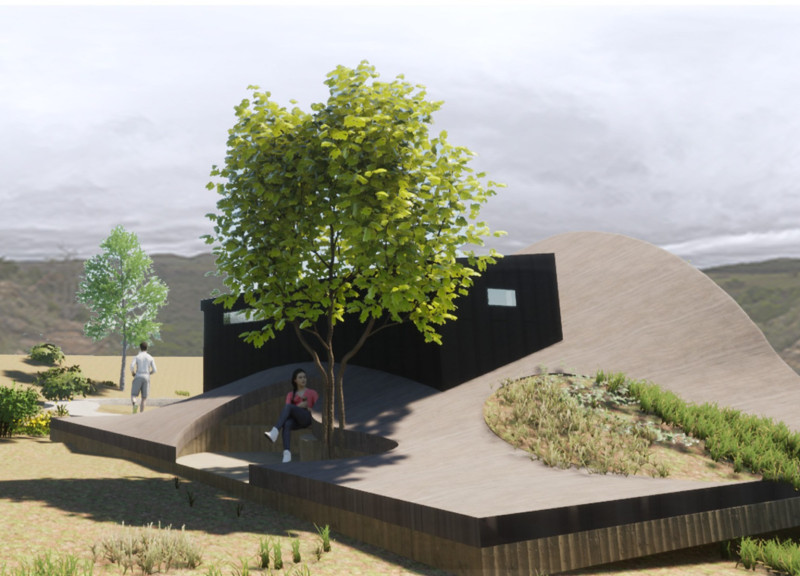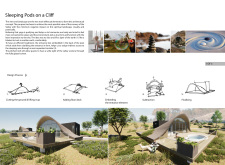5 key facts about this project
The Sleeping Pods on a Cliff project is located in a picturesque valley, creating a unique space for rest and reflection. Designed to foster connection with the surrounding environment, the concept focuses on enhancing the natural landscape while minimizing any negative effects. The aim is to provide an immersive experience that allows guests to feel in harmony with nature.
Integration with Landscape
The design seeks to blend the built structure with the natural terrain. It appears to lift a layer of earth, similar to tucking in a blanket, which reduces its impact on the site while promoting a feeling of serenity. By placing the sleeping pods along the valley’s contours, occupants can enjoy an uninterrupted view and a deeper appreciation of the landscape that envelops them.
Entrance and Spatial Configuration
At the back of each sleeping pod, the entrance is thoughtfully positioned to maximize headroom and clarity of access. This organization leads to a semi-separated corridor that provides indirect access to the sleeping areas, supporting smooth movement throughout the space. The layout enhances the functionality of the design, balancing areas of privacy with inviting spaces for relaxation and contemplation.
Roof Structure and Views
A pitched roof is an important aspect of the design. It allows for large glazed sections that frame the views of the valley while flooding the interior with natural light. This openness draws the outside in, making the surrounding nature a part of the guest experience. The angle of the roof also helps to create a sense of spaciousness within the pods, aligning with the overall goal of connection to the outdoors.
Sustainable Materials
Sustainability is a key consideration in the project. Materials like denim/cotton insulation batts, treated for fire resistance and pest deterrence, are utilized. Reclaimed timber is chosen for flooring and cladding, reinforcing a bond with the local environment. The project also features natural stone paving and durable zinc cladding, complemented by Low-E glass to enhance energy efficiency.
The design promotes a reflective space that respects both the natural setting and the needs of its users. It encourages a deeper connection to the environment, framed by the beauty of the valley, where each element serves a purpose and enhances the overall experience.






















































